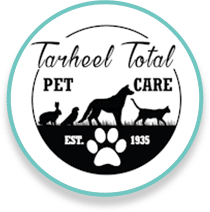Maintaining your pet’s healthy skin is crucial for their overall well-being, and effective grooming practices play a vital role. This article provides essential tips for pet grooming and skin conditions, ensuring that your furry friend stays comfortable and happy. Our expert guide will help you navigate common skin issues and maintain your pet’s skin health.
Effective pet grooming involves regular brushing, bathing with appropriate shampoos, and checking for parasites. Addressing skin conditions includes identifying irritants, keeping the skin clean, and consulting a veterinarian for persistent issues. Following these essential tips for pet grooming and skin conditions can help ensure your pet’s skin remains healthy and free from discomfort.
- Mastering the Basics of Pet Grooming
- Tips for Pet Grooming and Skin Conditions: What You Need to Know
- Top Tips for Brushing and Bathing Your Pet
- Identifying and Tackling Skin Irritants in Pets
- Protecting Your Pet from Parasites
- When to Seek Professional Help for Skin Conditions
- Creating a Long-Term Grooming Plan for Optimal Health
- Keeping Your Pets Skin Healthy and Comfortable
Kay Takeaways:
- Regular grooming with the right tools removes loose fur, dirt, and mats, significantly reducing the risk of skin problems and infections.
- Understanding common skin conditions and their signs, such as excessive scratching or redness, helps in early detection and effective management.
- Tailoring brushing and bathing routines to your pet’s specific needs, and using appropriate pet-specific products, ensures optimal skin and coat health.
- Identifying and minimizing exposure to environmental and dietary irritants is crucial in preventing and managing minor skin issues.
- Regular checks and preventive measures against fleas, ticks, and mites are essential in keeping your pet’s skin healthy and free from discomfort.
- Early intervention by a veterinarian for serious skin conditions can prevent more severe health issues and reduce treatment costs.
- Developing a consistent grooming schedule and using positive reinforcement makes grooming a positive experience, promoting your pet’s overall well-being.
But that’s not all—we have more to share! Keep reading to discover detailed steps and practical advice to keep your pet’s skin in top condition.
Mastering the Basics of Pet Grooming
Regular grooming is more than just keeping your pet looking good; it’s essential for their health and happiness. Grooming helps remove loose fur and dirt and prevents mats that can lead to skin irritation. Using the right tools, such as a slicker brush for dogs or a fine-toothed comb for cats, can make the process more effective and enjoyable for both you and your pet. A consistent grooming routine also allows you to check for any abnormalities like lumps, bumps, or signs of parasites. These tips for pet grooming and skin conditions ensure they always look and feel their best.
Tips for Pet Grooming and Skin Conditions: What You Need to Know
Understanding common skin conditions in pets, such as allergies, infections, and parasites, is essential for their health. Symptoms like excessive scratching, redness, and hair loss should be addressed promptly. A study of dogs in 52 US veterinary practices found a 4.7% prevalence of atopic or allergic dermatitis. Preventative measures, such as regular grooming and maintaining a clean living environment, are crucial. According to Oklahoma State University Extension, 95% of flea infestations occur in just 5% of the house or yard, highlighting the need for thorough cleaning. Regular grooming helps identify issues early and maintain a healthy coat, preventing many skin problems.
Top Tips for Brushing and Bathing Your Pet
Brushing and bathing are essential for pet grooming. Tailor your approach based on your pet’s needs: long-haired breeds need frequent brushing to prevent mats, while short-haired breeds benefit from regular brushing to remove loose fur and stimulate the skin. These tips for pet grooming and skin conditions will help maintain your pet’s coat and overall health. Use pet-specific shampoos to maintain the natural pH balance of their skin, avoiding human shampoos that can be too harsh. If unsure which products to use, a grooming specialist can recommend the best options for your pet’s unique needs.
Identifying and Tackling Skin Irritants in Pets
Pets can be exposed to various environmental and dietary irritants that affect their skin, including certain foods, household cleaning products, and outdoor allergens like pollen. Recognizing and managing these irritants is essential for maintaining healthy skin. These tips for pet grooming and skin conditions emphasize the importance of using hypoallergenic products and keeping your pet’s living environment clean to minimize exposure. If your pet develops minor skin issues like dry skin or mild itching, home remedies such as oatmeal baths and coconut oil can provide relief. For persistent or severe conditions, consulting a veterinarian is crucial. According to the Cornell Richard P. Riney Canine Health Center, atopic dermatitis, a common skin disease characterized by excessive itchiness (pruritus), affects up to 10-15% of dogs.
Protecting Your Pet from Parasites
Parasites such as fleas, ticks, and mites are common culprits behind pet skin conditions. Regular checks and preventive measures are essential to protect your pet from these pests. Using flea and tick preventatives, checking your pet’s fur and skin regularly, and maintaining a clean home environment can significantly reduce the risk of infestations. These tips for pet grooming and skin conditions will help you keep parasites at bay. If you do find parasites on your pet, prompt treatment is necessary to prevent further discomfort and potential health issues. Various treatment options are available, including topical solutions, oral medications, and specialized shampoos.
When to Seek Professional Help for Skin Conditions
While many skin conditions can be managed at home, some require professional attention. Serious issues such as severe allergies, infections, or unexplained hair loss should be evaluated by a veterinarian. During a vet visit, expect a thorough examination and possibly some tests to determine the cause of the skin condition. Early intervention, along with the essential tips for pet grooming and skin conditions, can prevent more serious health problems and ensure your pet remains comfortable.
Creating a Long-Term Grooming Plan for Optimal Health
Developing a long-term grooming plan is essential for maintaining your pet’s health and well-being. This plan should include regular grooming sessions, routine health checks, and preventive measures against parasites and skin conditions. Integrating grooming into your pet’s routine can make the process more enjoyable for both you and your pet. Positive reinforcement, such as treats and praise, can help your pet associate grooming with positive experiences. Incorporating these tips for pet grooming and skin conditions will ensure your pet enjoys a healthy, happy life.
Keeping Your Pets Skin Healthy and Comfortable
Ensuring your pet’s skin remains healthy and free from discomfort is a crucial aspect of their overall well-being. By incorporating regular grooming practices, using appropriate products, and being vigilant about potential skin irritants and parasites, you can significantly improve your pet’s quality of life. Remember to consult a veterinarian for any persistent or serious skin conditions and to develop a long-term grooming plan tailored to your pet’s specific needs.
At Tarheel Total Pet Care, our comprehensive grooming services ensure that your pet remains happy, healthy, and well-groomed. Call us today at 908-234-0644 to learn more about our services and how we can help keep your pet’s skin in top condition. Your pet deserves the best, and we’re here to provide it.
How often should I groom my pet to prevent skin conditions?
The frequency of grooming depends on your pet’s breed, coat type, and lifestyle. Generally, it’s recommended to brush your pet at least once a week. Long-haired breeds may require daily brushing to prevent mats and tangles. Bathing your pet every 4-6 weeks is typically sufficient, but pets with oily skin or those who spend a lot of time outdoors may need more frequent baths. Regular grooming helps to remove loose fur, dirt, and potential allergens, reducing the risk of skin conditions.
What are some signs that my pet might have a skin condition?
Common signs of skin conditions in pets include excessive scratching, licking, or chewing at the skin, redness or inflammation, hair loss, dry or flaky skin, and the presence of sores or scabs. You might also notice an unusual odor coming from your pet’s skin or fur. If you observe any of these symptoms, it’s important to consult a veterinarian for a proper diagnosis and treatment plan.
Are there specific dietary changes that can help improve my pet’s skin health?
Yes, diet plays a significant role in your pet’s skin health. Providing a balanced diet rich in essential fatty acids, vitamins, and minerals can improve skin and coat condition. Omega-3 and Omega-6 fatty acids, found in fish oil and flaxseed oil, are particularly beneficial for maintaining healthy skin. Additionally, ensuring your pet is hydrated and avoiding foods that trigger allergies can help manage and prevent skin issues. Consult with your veterinarian to determine the best dietary plan for your pet’s specific needs.



